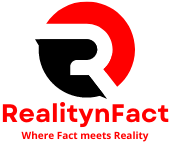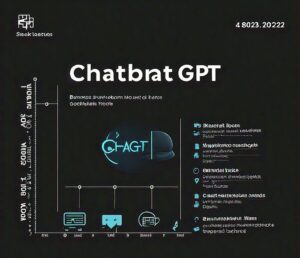In the ever-evolving landscape of artificial intelligence, one of the most groundbreaking developments has been the emergence of Chat-GPT software. Powered by advanced machine learning models, this technology has significantly transformed how we interact with machines, making conversations more natural, intuitive, and engaging. In this blog, we will delve into the intricacies of Chat-GPT software, explore its vast potential, and understand how it is revolutionizing AI conversations across various industries.
What is Chat-GPT Software?
Chat-GPT software is built on the Generative Pre-trained Transformer (GPT) architecture, developed by OpenAI. The GPT model leverages deep learning techniques to understand and generate human-like text based on the input it receives. The latest iteration, GPT-4, is particularly notable for its improved accuracy, context understanding, and the ability to generate coherent and contextually appropriate responses.
Key Features of Chat-GPT Software
- Natural Language Processing (NLP): Chat-GPT excels in understanding and processing natural language, making interactions seamless and more human-like.
- Contextual Awareness: The model can maintain context over long conversations, enabling more meaningful and coherent exchanges.
- Versatility: It can be applied across various domains, from customer service and support to content creation and personalized marketing.
- Scalability: The software can handle multiple conversations simultaneously, making it suitable for large-scale applications.
The Evolution of AI Conversations
Traditionally, AI-powered chatbots were rule-based and limited in their conversational abilities. They could only handle specific queries and often failed when conversations deviated from predefined scripts. The advent of Chat-GPT has marked a significant shift, enabling AI to engage in open-ended conversations and understand nuanced language.
The Rise of GPT Models
The journey began with GPT-2, which demonstrated the potential of generative models in creating human-like text. GPT-3 expanded on this foundation with 175 billion parameters, enhancing its capability to understand and generate complex language structures. GPT-4 has taken this a step further, with improved training methodologies and more extensive datasets, resulting in even more refined conversational abilities.
Revolutionizing Industries with Chat-GPT
The versatility of Chat-GPT software has led to its adoption across a myriad of industries. Here are some notable applications:
Customer Support
Chat-GPT is transforming customer support by providing instant, accurate, and personalized responses. Companies are leveraging this technology to reduce response times, handle a larger volume of queries, and improve customer satisfaction. For instance, Chat-GPT can assist with troubleshooting, order tracking, and answering frequently asked questions, all while maintaining a human-like conversational tone.
Healthcare
In healthcare, Chat-GPT is being used to provide preliminary medical advice, schedule appointments, and offer mental health support. Virtual health assistants powered by Chat-GPT can analyze patient queries, provide information on symptoms and treatments, and remind patients about medication schedules, thereby enhancing patient care and operational efficiency.
Education
Educational platforms are integrating Chat-GPT to offer personalized tutoring, answer student queries, and provide feedback on assignments. This technology enables a more interactive and engaging learning experience, catering to individual learning paces and styles.
Content Creation
Content creators are utilizing Chat-GPT to generate ideas, draft articles, and even compose creative writing pieces. The model’s ability to understand context and produce coherent text makes it a valuable tool for writers, journalists, and marketers looking to streamline their content creation process.
E-commerce
In the e-commerce sector, Chat-GPT enhances customer engagement by providing personalized product recommendations, assisting with purchase decisions, and handling post-purchase support. This level of interaction not only improves customer experience but also drives sales and customer loyalty.
The Technical Backbone of Chat-GPT
Understanding the technical intricacies behind Chat-GPT provides insight into its powerful capabilities. The model is based on the transformer architecture, which uses self-attention mechanisms to process and generate text. This architecture allows the model to weigh the importance of different words in a sentence, enabling it to understand context and produce relevant responses.
Training and Fine-Tuning
Training Chat-GPT involves pre-training on a diverse corpus of text followed by fine-tuning on specific datasets to enhance its performance in particular domains. This two-step process ensures that the model not only has a broad understanding of language but can also specialize in areas like healthcare, finance, or customer support.
Ethical Considerations
While the potential of Chat-GPT is immense, it also raises ethical considerations. Ensuring the responsible use of this technology is paramount. This involves addressing issues like data privacy, mitigating biases in AI responses, and preventing misuse in generating harmful content. OpenAI and other organizations are actively working on guidelines and frameworks to ensure ethical AI deployment.
Future Prospects of Chat-GPT Software
The future of Chat-GPT software looks promising, with continuous advancements in AI research poised to further enhance its capabilities. Some anticipated developments include:
- Improved Contextual Understanding: Future models will likely have an even better grasp of context, enabling more complex and nuanced conversations.
- Multimodal Capabilities: Integrating text with other forms of data like images and videos could lead to more enriched interactions.
- Personalization: Enhanced personalization features will allow the software to adapt to individual user preferences and behaviors more effectively.
- Real-Time Translation: Real-time language translation capabilities could break down communication barriers across different languages, fostering global connectivity.
Conclusion
Chat-GPT software is undeniably at the forefront of AI-driven conversational technologies, unlocking new possibilities across various sectors. Its ability to understand and generate human-like text has revolutionized the way we interact with machines, making these interactions more natural, efficient, and productive. As we continue to explore and enhance this technology, the potential for Chat-GPT to transform industries and improve user experiences is boundless.
Embracing Chat-GPT software not only signifies a step towards technological advancement but also heralds a new era of AI-human collaboration, where machines can understand and respond to human needs with unprecedented accuracy and empathy. The journey of unlocking the full potential of Chat-GPT is just beginning, and its impact on the future of AI conversations is set to be profound and far-reaching.





